We have all heard about the phrase reduce, reuse, and recycle. They symbolise the balance we should maintain with our environment—a balance that shields us from the harmful effects of waste.
The three Rs centre around minimising consumption and the use of resources in production. Also, to lower our energy demand and the waste we generate. But first, let’s compare biodegradable and compostable. Our readers often ask about this.
We are reader-supported and sometimes include products we think are useful for our readers. If you buy through links on this page, we may earn a small commission.
What’s the Difference Between Biodegradable and Compostable?
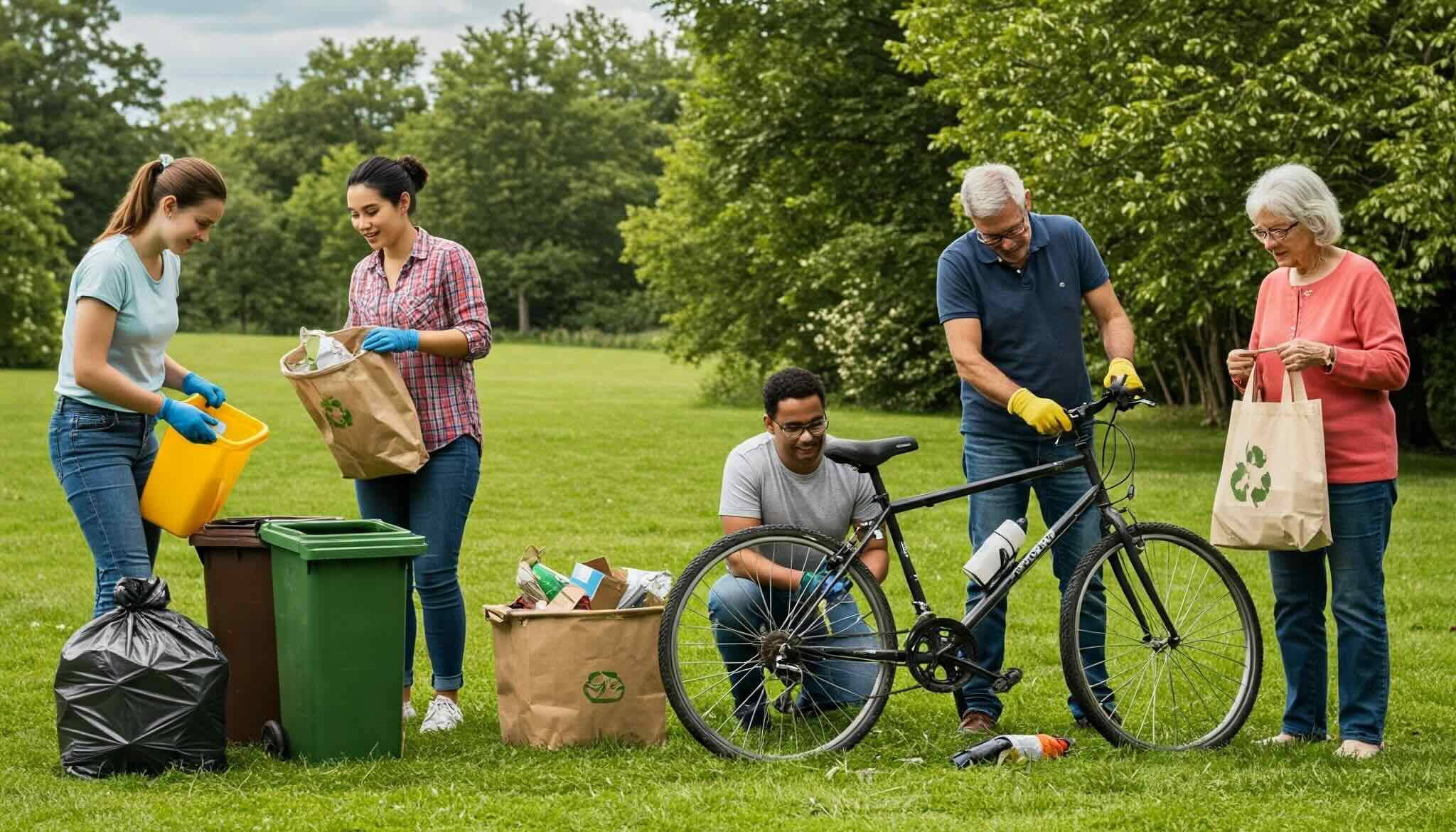
Biodegradable materials are designed to break down naturally thanks to microorganisms. ‘Over time’ could mean weeks or centuries.
However, not every biodegradable material breaks down effectively in landfills, leaving harmful residues.
Compostable materials, on the other hand, promise to decompose within a specific time frame given the right temperature, moisture level, and oxygen conditions. Besides, they leave a nutrient-rich compost that can be later used as a fertiliser with no toxic remnants. In short, they vanish without a trace.
Understanding compostables, let’s explore sustainability’s core principles.
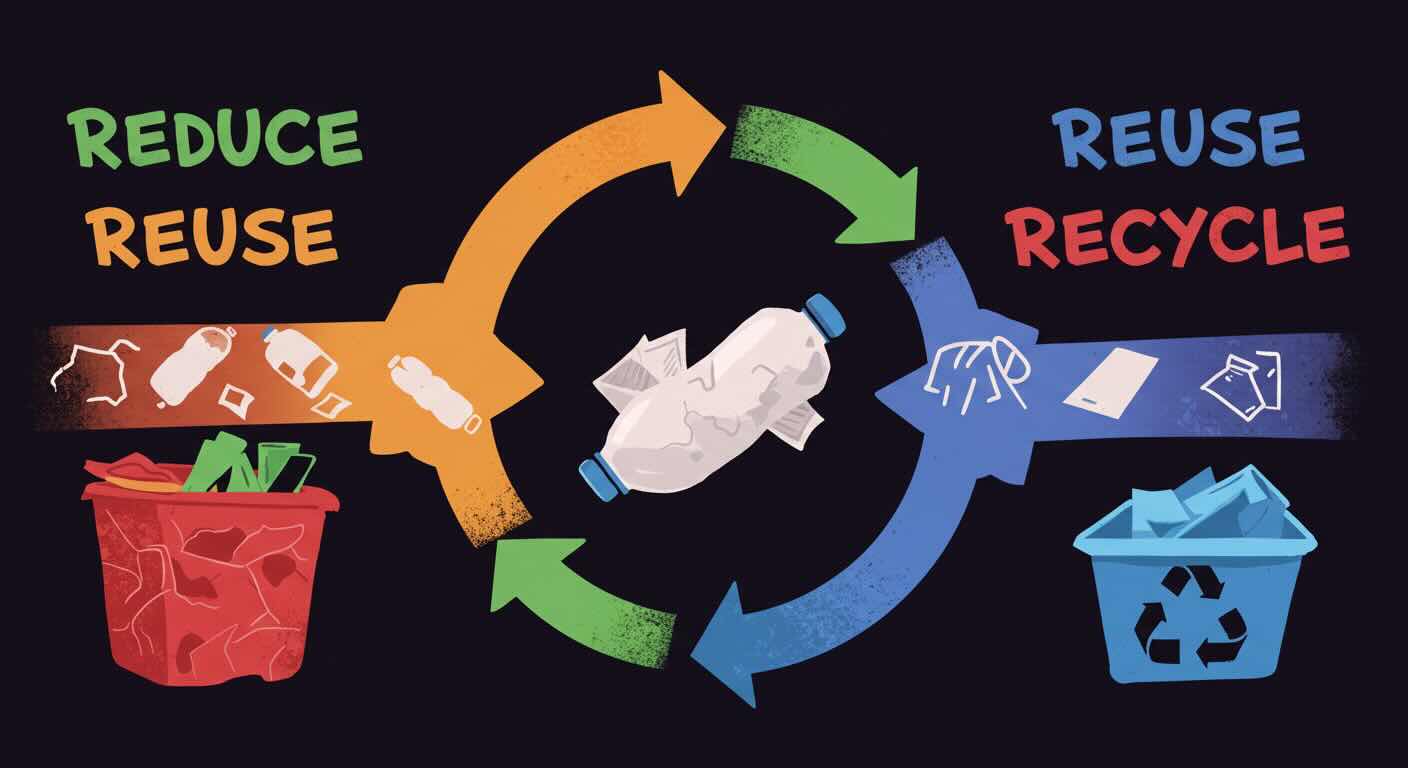
Reduce
Reducing is the best way to minimise your impact on the environment. It means to cut down on purchasing or using things you don’t need while saving resources, such as oil and water, involved in production processes.
Here are practical ways to limit waste:
| Resist impulse buying. |
| Repair damaged clothes and electronics instead of replacing them. |
| Avoid single-use items such as straws, plastic cups, and bottled drinks. |
| Reject products with excessive packaging. They come in a cardboard box containing a plastic bag, which in turn has a wrapped product. |
| Limit printing and send digital documents. |
| Walk, cycle, or use public transport instead of using your car. |
| Hang your washing outside rather than turning on a tumble dryer if you have the space. |
Here is the second R.
Reuse
Let’s say you have something you don’t want anymore. Extend its usefulness and give it a new purpose. One person’s trash is another’s treasure.
| Sell it on eBay, Facebook, or any other platform. |
| Offer it to a friend who might need it. |
| Donate it to charity or send it to your local church. |
| Hold a yard or car boot sale; you’ll pocket a few quid. |
| Upcycle, innovate, and transform it into a novel and functional item. |
With reduction and reuse covered, let’s shift our focus to the final R.
Recycle
Recycling means breaking down an item and making something new from the resulting materials. But it comes with downsides. It’s time-consuming, energy-intensive, and expensive. Thus, recycle only if you cannot repair or reuse.
Of the three Rs, this is the least useful, but still better than sending rubbish to a waste site or the ocean.
Products to recycle include:
| Textiles such as clothing and bedding that you cannot repurpose for cleaning. |
| Paper. |
| Plastics. Companies melt, shred, or chemically treat them to mould or extrude new items. But all these processes are harmful to the environment. |
| Mobile phones. This is essential due to the presence of rare and valuable minerals. |
| Glass and aluminium, of course. They have a high rate of recycling. |
Keep in mind that we cannot recycle everything. Some products are very hard to sort or process because of mixed materials. This list shows you a handful of them:
Non-Recyclable Items
| Toothpaste tubes. |
| Disposable nappies, sanitary, and incontinence pads. |
| Shop receipts. They contain chemicals that affect reprocessing. |
| Food-stained paper and card. |
| Gift wrap. It’s a blend of laminated plastic and paper. |
| Glitter. These tiny, shiny plastic particles are impossible to collect. |
| Paper towels. |
| Shoes. They have several layers of rubber and thread. |
| Plastic film, if it has food residues. |
| Pyrex (non-recyclable whatsoever) |
| Coffee cups. Although appearing like cardboard, they have a thin plastic layer. |
| Coffee pods. Plastic, aluminium, and coffee grounds can’t be together. |
| Stickers. Paper, plastic, and adhesive blend into them. |
| Bioplastics. They decompose (in theory). |
| Medical waste, for obvious reasons. |
| Incandescent tungsten bulbs. |
Here’s another concept worth mentioning in this eco-friendly journey.
The Waste Hierarchy
The EU set up this directive in 2008 to rank waste management methods. Its five tiers offer the best way to deal with rubbish or unwanted items.
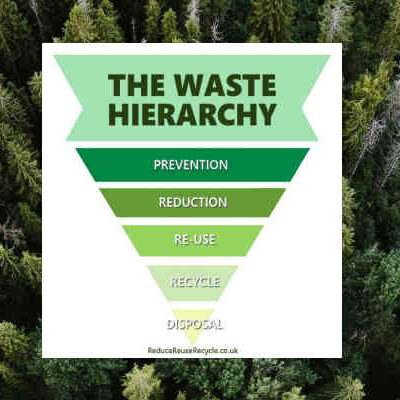
The 5 Levels of the Waste Hierarchy
This inverted triangle shows the optimal method for dealing with waste.
1- Prevention
This highest level focuses on avoiding generating waste in the first place. It likewise covers product design aimed at durability, waste reduction, packaging, transport, and attention to disposal in the development process.
2- Reuse
Reuse involves using items multiple times without altering their original form. It includes buying secondhand and either selling or donating instead of disposing. It also refers to repurposing. For instance, an old metal band T-shirt can be your next tote bag for shopping.
3- Recycling
As the best known, it transforms waste materials into new products. Here are examples:
- Melt aluminium cans to make tools.
- Pulp paper to create boxes.
- Shred plastics to form pellets.
- Turn worn-out tyres onto roads.
4- Energy Recovery
As a last resort, waste is burnt to produce electricity. The heat produced by combustion drives a turbine, generating electric power. This is like the methods used in fossil fuel energy generation.
Textiles, wood, and organic matter serve as combustibles for this process called ‘gasification.’
5- Disposal
At the bottom of the triangle, this level involves sending waste to landfills or burning it with no energy harvesting.
By following this hierarchy, we reduce our environmental footprint. But some are convinced we should go even further. Here’s where The Zero Waste movement steps forward. It builds on the Three Rs and challenges us to rethink waste entirely. Let’s explore what this is about.
Zero Waste

It’s named after The Zero Waste Alliance, an organisation that fosters positive alternatives to landfill and incineration. Moreover, it raises awareness of the value of waste to create jobs and business opportunities.
This NGO guides people to adopt sustainable practices to mimic natural cycles, where discarded materials are useful to others.
All in all, Zero Waste goes beyond “Reduce, Reuse, and Recycle.” It is a philosophy. Every product should be designed from the outset with its final disposal in mind.
Living a Zero Waste Lifestyle
To achieve it, you must minimise your impact on the environment by:
- Avoiding single-use items of any kind.
- Reusing and repairing rather than buying new.
Nevertheless, a waste-free life is quite difficult these days.
Despite doing everything in your power, you still get parcels wrapped in masking tape, plastic, and cardboard. And delivered by a petrol car.
Adopting this lifestyle takes effort, but every small step matters.
- Purchase only recyclable, compostable, or built-to-last items.
- Avoid excessive packaging.
- Repurpose as much as possible.
- Buy only what you need.
The smallest pebble can start an avalanche. If everybody did that, manufacturers would have no other choice but to create goods that meet the Zero Waste criteria. It’s difficult, I know, but not impossible. Any suggestions?
Striving for a zero-waste lifestyle means making informed choices about the products we buy and the brands we support. But not all businesses are as carbon-neutral as they claim to be. This brings us to an important issue: greenwashing. Let’s discover how to spot it.
What is Greenwashing and Why Is It Bad?
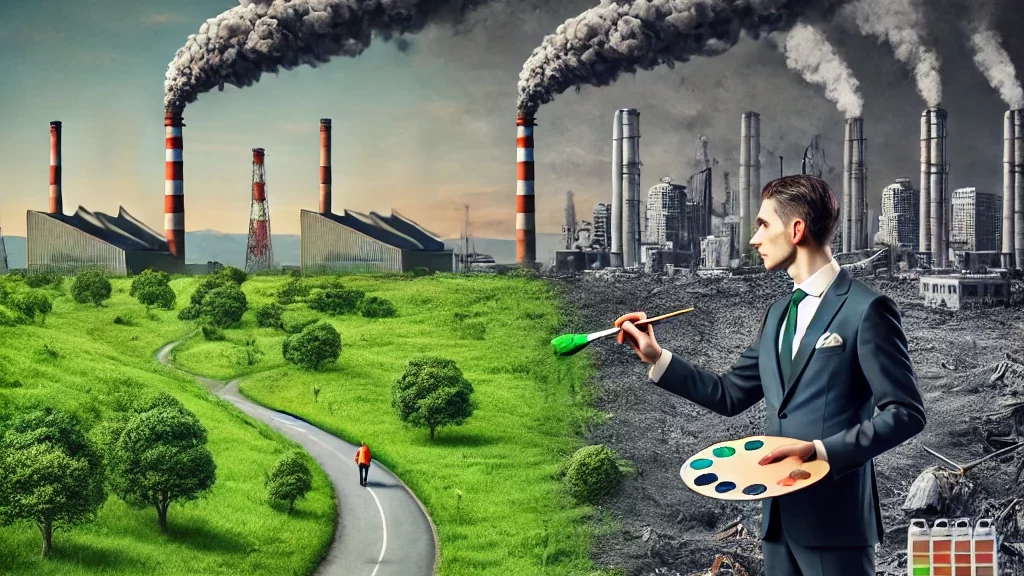
Greenwashing refers to the deceptive marketing strategies companies use to appear more environmentally friendly than they are.
Take, for example, a fashion brand promoting a bamboo-fibre range of clothes. Perhaps the ingredients are organic, but the production process is not green whatsoever.
To illustrate, it takes 2,700 litres of water to make a single cotton T-shirt. That’s enough for one person to drink for 900 days.
Another tactic companies often use is ‘carbon offsetting,’ which entails planting trees whenever you buy a product. Truth be told, they continue with their harmful practices, but they’ll try to ensnare you in their web because you helped them plant a tree.
Some firms are even more immoral by printing images of plants, animals, or landscapes to evoke a taste of nature. Don’t fall for that.
Shameless Examples of Greenwashing
Companies constantly devise plans to lie to us. And governments cannot control them. Thus, we are on our own. The best way to protect ourselves from corporate tricksters is to learn about past scams. This will help us spot greenwashers more easily. Let’s look at recent greenwashing lowlights:
Shell (2020)
What else can we expect from an oil company but greenwashing? Shell alone is responsible for around 2% of global CO2 emissions.
Five years ago, the company’s marketing team pulled a shameless PR stunt that ended up backfiring. They asked their Twitter followers “what they’d be willing to change to help cut emissions.”
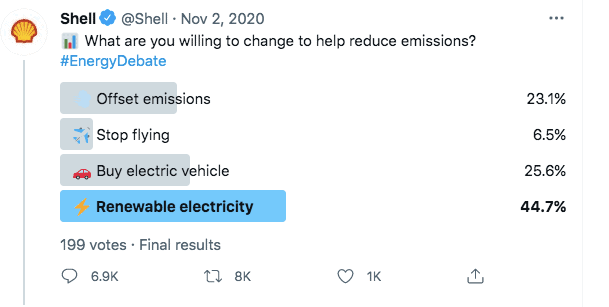
This was one of the most egregious examples of greenwashing. A few months later, a European tribunal ordered Shell to cut its carbon footprint by 45% by 2030. But in November 2024, the Court of Appeal in The Hague overturned this ruling.
How much did Shell pay to those in that court?
Ikea (2020)
An investigation by Earthsight found that IKEA had been making beechwood chairs from illegally sourced wood from the forests of Ukraine’s Carpathian region.
The most shocking part: the Forest Stewardship Council certified the illegal timber. This raises serious questions about the ethics and transparency of the FSC accreditation.
Besides, Earthsight claimed that this was not limited to Ukraine but rampant across the globe.
Windex (2020)
SC Johnson stated that Windex’s bottles were 100% “ocean plastic.”
The truth: the plastic was never in any marine environment but pulled from plastic banks in Indonesia, the Philippines, and Haiti.
But the false claims don’t end there.
While Windex promotes itself as a non-toxic option, a 2020 lawsuit revealed that it is laced with harmful chemicals.
H&M (Hennes & Mauritz) Fast Fashion (2021)
The United Nations says the fashion industry accounts for 10% of global carbon emissions, more than shipping and aviation combined.
In 2021, the Changing Markets Foundation examined the accuracy of major clothing brands’ sustainability claims.
The NGO found that 60% of the claims were misleading. The worst part? H&M topped the chart, with 96%. So virtually all Hennes & Mauritz’s assertions were designed to trick people concerned for the environment.
So, the next time you consider buying from them, think twice. They are destroying the Earth. Yes, it’s hard to say it, but it is not an exaggeration.
Innocent (2022)
Innocent Drinks released TV cartoon ads with cute animals singing songs about recycling and fixing the planet.
Plastic Rebellion reported this pure and simple greenwashing. Then the ASA (Advertising Standards Authority) banned the ludicrous publicity.
In case you didn’t know, this brand is owned by Coca-Cola, the worst plastic polluter in the world.
Perhaps they thought people were stupid.
Keurig (2022)
In Canada, this company falsely advertised that its single-use plastic coffee pods were recyclable. Keurig asserted that the empty capsules could be recycled if users:
- Break them open.
- Remove the coffee.
- And toss the used ones into disposal containers.
But recycling centres did not accept them. They can’t be reprocessed. So, the city of Toronto reverted 90 tonnes of plastic pods from recovery bins. Because of that, Keurig was fined $3 million and ordered to change the misleading claims on the packaging of their products.
Active Super (2023)
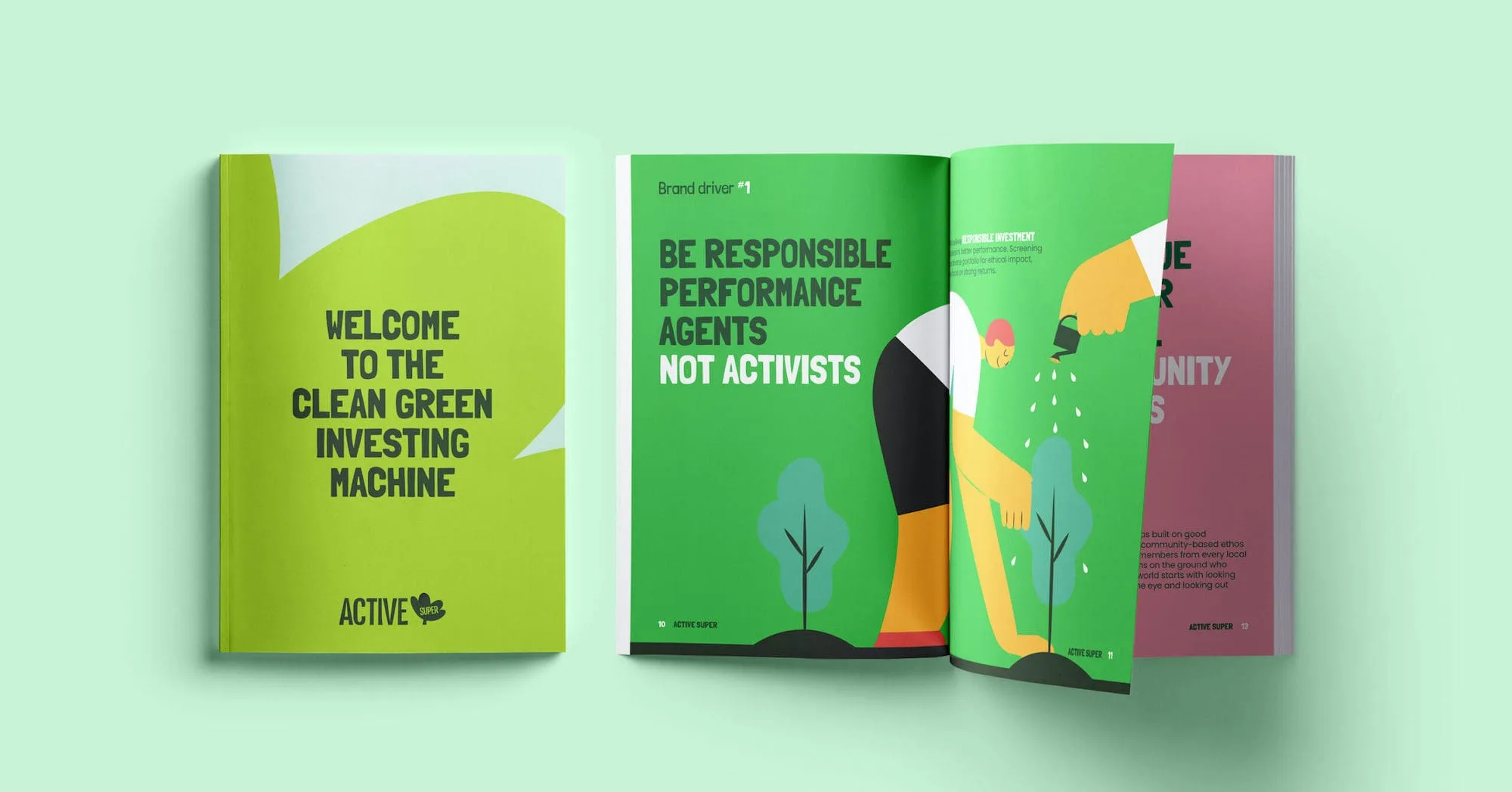
Money drives greenwashing; thus, financial institutions are part of it.
One of Australia’s biggest superannuation funds, Active Super, previously linked to sustainability, was sued by Australia’s Securities and Investments Commission.
The ASIC followed the breadcrumbs and discovered that this company owned shares in a tobacco business, Russian oil and gas firms, and a coal mining corporation, amongst others.
In June 2024, Australia’s Federal Court found Active Super guilty of greenwashing. Hypocrites.
We all hope that the days of this deceptive scheme are numbered. As consumers, we have the power to demand transparency and hold companies accountable for their environmental claims.
Every action—whether it’s refusing unnecessary packaging, repairing old gadgets, or using a reusable water bottle—adds up to a significant impact. The Three Rs (Reduce, Reuse, Recycle) aren’t just catchy words; they’re a mindset that reshapes how we interact with the planet.
Reducing waste isn’t about being perfect but making good choices whenever we can. No one expects you to go Zero Waste overnight or to stop buying things altogether. What matters is progress, not perfection.
At the same time, we need to stay sharp. Greenwashing is everywhere, and companies will bend over backwards to appear sustainable. A wolf in sheep’s clothing—eco edition. The best way to fight back? Follow the latest updates, ask questions, and support brands committed to protecting the planet—not only their profits.
So, when will you start? What’s one change you can make today? Share your thoughts, and let’s inspire others to do better.



2 thoughts on “Reduce, Reuse, Recycle: A Comprehensive Guide for Our Eco-Friends”